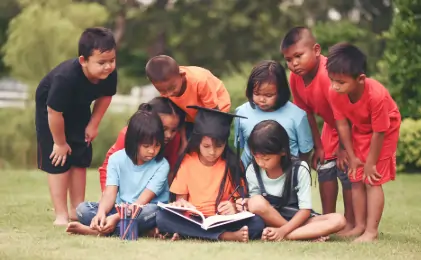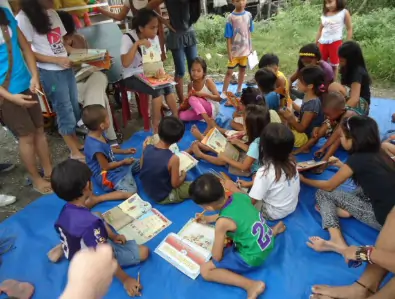How Philippine Education Faces Critical Challenges this 2025?
As we approach 2025, the Philippine Education Faces Critical Challenges that threaten the quality of education for millions of students. Issues such as low proficiency rates, significant learning losses due to pandemic disruptions, teacher shortages, and outdated infrastructure need immediate attention.

These challenges must be addressed to ensure that students across the country receive the education they deserve, preparing them for future success in an increasingly competitive global landscape. Reforms and investments are essential to overcome these hurdles and build a stronger education system.
Table of Contents
Low Proficiency Rates and Learning Losses
One of the most significant issues facing the Philippine education system is the persistent low proficiency rates among students. Recent assessments such as the Programme for International Student Assessment (PISA) have highlighted that Filipino students lag behind their peers in other countries in basic literacy and numeracy.
The problem is compounded by the educational setbacks caused by the COVID-19 pandemic, which disrupted learning for over two years.

Many students are still trying to recover from the long period of remote and blended learning, leading to significant learning losses. In fact, a majority of students are not meeting the basic standards in reading, math, and science.
Teacher Shortages and Training Gaps
The shortage of qualified teachers remains a critical challenge in the Philippine education system. The Department of Education (DepEd) continues to face difficulties in meeting the demand for teachers, especially in rural and underserved areas.
Moreover, teachers often lack sufficient training and resources to effectively integrate technology into their teaching methods, despite the growing importance of digital literacy. Many teachers are also dealing with overcrowded classrooms, outdated teaching materials, and low salaries, which further hinder their ability to deliver quality education
Inadequate Infrastructure and Digital Divide
A lack of adequate infrastructure is another significant hurdle for the Philippine education system. Many public schools, particularly in rural areas, still lack basic facilities such as electricity, functioning computers, and internet access. This is especially concerning in a world where digital learning is becoming increasingly important.
The digital divide between urban and rural schools is growing, leaving many students without access to the tools they need to succeed in an increasingly digital education landscape.
Although the government has begun to allocate funds for infrastructure development, progress has been slow, and many schools are still struggling to provide the resources their students need
Curriculum Overload and Reform Efforts
The Philippine curriculum is often criticized for being overloaded with too many subjects and topics, which limits students’ ability to develop critical thinking skills. With a focus on rote memorization and subject coverage, students are not given enough time to cultivate essential skills such as problem-solving and creativity.
The DepEd has acknowledged the need for curriculum reform, aiming to prioritize foundational subjects like literacy, numeracy, and critical thinking. Additionally, there is an increasing push to introduce subjects that address contemporary issues such as climate change and sustainability
Government Initiatives and Budget Allocation
In response to these Philippine Education Faces Critical Challenges, the Philippine government has committed to allocating a significant portion of its budget to education. The DepEd’s proposed budget for 2025 is P790.89 billion, a notable increase from previous years.
This funding will be used to improve teacher welfare, upgrade school infrastructure, and provide digital tools to enhance learning. While this is a step in the right direction, experts argue that the budget still falls short of what is needed to fully address the system’s challenges.
For example, the government currently spends only about 3.7% of its GDP on education, which is below the ideal range of 4-6%
Conclusion: Philippine Education Faces Critical Challenges
The Philippine education system is at a critical juncture in 2025, facing a range of significant challenges that require immediate attention. From low student proficiency to a lack of infrastructure and teacher shortages, the path to reform is not easy.
However, with continued government investment, strategic reforms, and collaboration between the public and private sectors, there is hope that the education system can rise to meet these challenges. Ensuring that every Filipino student has access to quality education will be essential for the country’s future success.
FAQs
Q1: What are the biggest challenges in Philippine education today?
- Low Proficiency Rates: Many students struggle with basic skills in literacy and math, worsened by learning losses from the pandemic.
- Teacher Shortages: There aren’t enough qualified teachers, particularly in rural areas, affecting the quality of education.
- Inadequate Infrastructure: Many schools lack essential resources like internet access and technology.
- Curriculum Overload: The curriculum has too many subjects, leaving little time for students to develop critical thinking skills.
These issues need immediate attention to improve the education system.
Q2: How is the government addressing these issues?
The government is addressing Philippine Education Faces Critical Challenges by increasing the education budget, improving teacher support, and upgrading school infrastructure. They are also revising the curriculum and investing in technology to ensure equal learning opportunities for all students, especially in rural areas.
Q3: Why is digital access a concern in Philippine schools?
Digital access is a concern in Philippine schools because many schools, especially in rural areas, lack basic infrastructure like reliable internet, computers, and electricity. This gap makes it difficult for students to engage in online learning or access digital resources. As education becomes more digital, students without these tools fall behind, limiting their opportunities for learning and future success.
Disclaimer
The information presented in this article of Philippine Education Faces Critical Challenges reflects the latest available data on the Philippine education system as of 2025. Efforts have been made to ensure accuracy; however, educational policies, funding, and challenges are continuously evolving.
The situation can vary by region, and updates from the Department of Education (DepEd) and other authoritative sources may provide the most current details. For official information, policy changes, and further developments, it is advised to refer directly to DepEd publications, government announcements, and relevant educational reports.
TechWirings does not endorse or explicitly support any views or actions expressed in this content.










